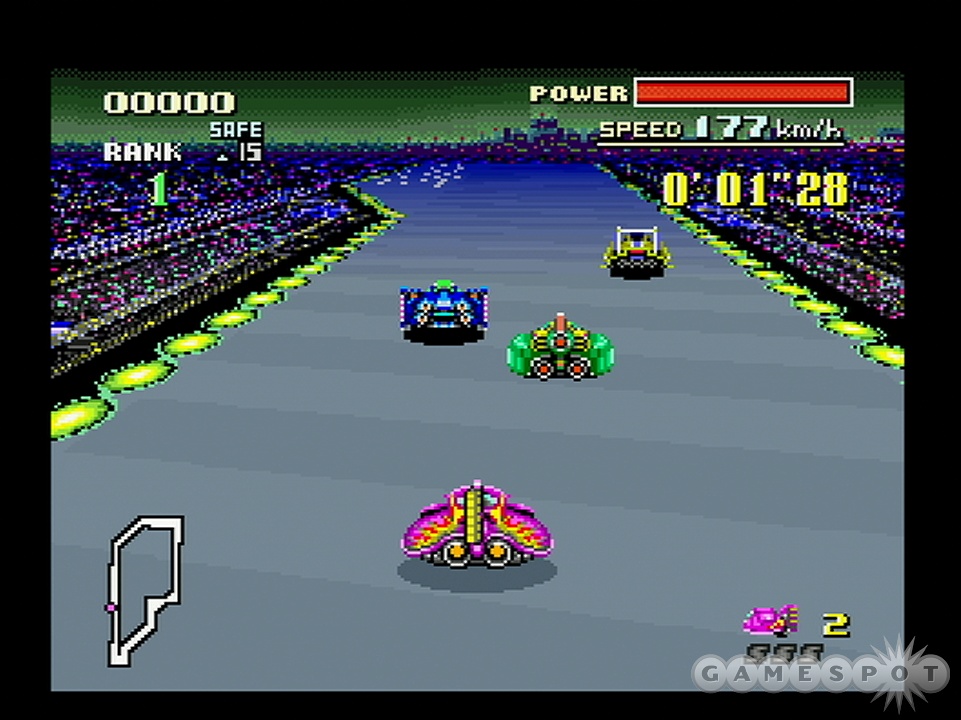F-Zero, Nintendo's incredibly fast, futuristic racing game, instantly became one of the defining titles for the Super Nintendo Entertainment System when it was released in 1991. For one thing, it was one of the most visually stunning console games of its time, thanks to its extensive use of the SNES's proprietary Mode-7 scaling technology, which gave it the appearance of having fully 3D graphics years before such graphics became commonplace. For another, it featured truly excellent gameplay, offering up a perfect balance of pick-up-and-play accessibility and sheer depth. And though it lacked a two-player mode, its selection of 15 different tracks and its adjustable difficulty modes still gave it a lot of lasting appeal. Like any classic game, F-Zero still plays great all these years later, and it still looks good to boot. It's one of the first, best games to appear on the Wii's Virtual Console service.

F-Zero features four different racing hovercraft to choose from, each of which handles about as differently as it looks. Controls are simple; all you need to do is accelerate, and you can also lean left or right to make tighter turns or to drift slightly to either side. The handling and collision feel just right, and the sense of speed is terrific, as the game runs fast and smooth. You earn a speed boost after every lap, and you may also drive through an energy field to recover from damage you sustained while racing. You take damage from bumping into walls or other hazards and may even lose the race instantly if you fly off the track. The game's highly varied tracks still have a lot of personality, thanks partly to an excellent musical score that quickly establishes the game's subsonic pace.
This is a perfect, no-frills emulation of the original. That's mostly a very good thing, although it's hard to shake the thought of how great it could be if the original F-Zero were bolstered with online multiplayer and global leaderboards. This version of F-Zero does benefit from a few of the inherent features of the Virtual Console service, though, such as the ability to quit out of the game at any time and later resume progress from exactly where you left off. The grand prix mode takes a fair amount of time to play through since you need to complete races on several different tracks in a row, so being able to leave and come back to the racing is nice. Also, the game looks surprisingly attractive on a progressive-scan display and plays great using a GameCube controller (or you can use the Classic Controller, though you can't play this game using the Wii Remote). The GameCube controller's analog stick works very well for steering, even though the game was originally designed for use with a D pad.
F-Zero lets you access most of its different leagues and tracks right off the bat and doesn't have a lot of the extras and options that you've probably come to expect from today's racing games. However, it's still more fun than most of today's new racing games are, because the controls are better, the track design is better, and the music is better. A nostalgic fan would probably get more out of F-Zero than someone who has never played it before, but at 800 Wii points ($8), it's as easy as ever to recommend to just about anyone.